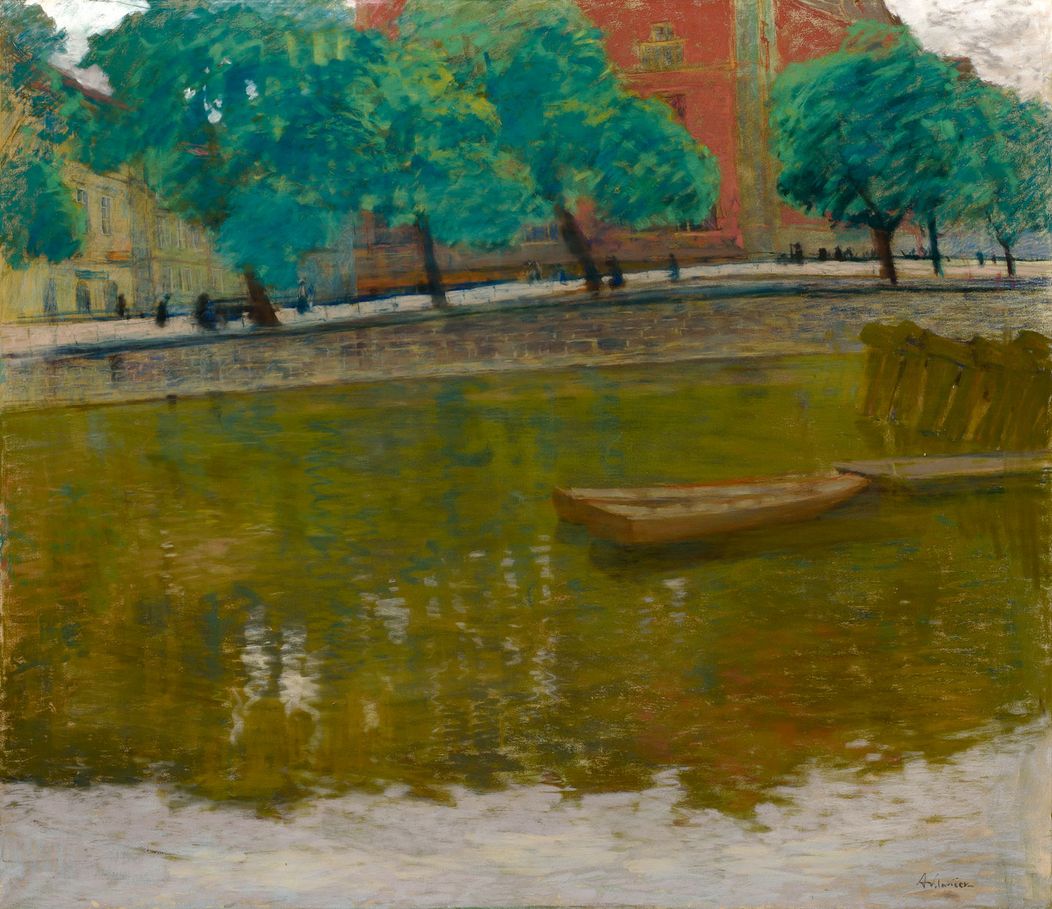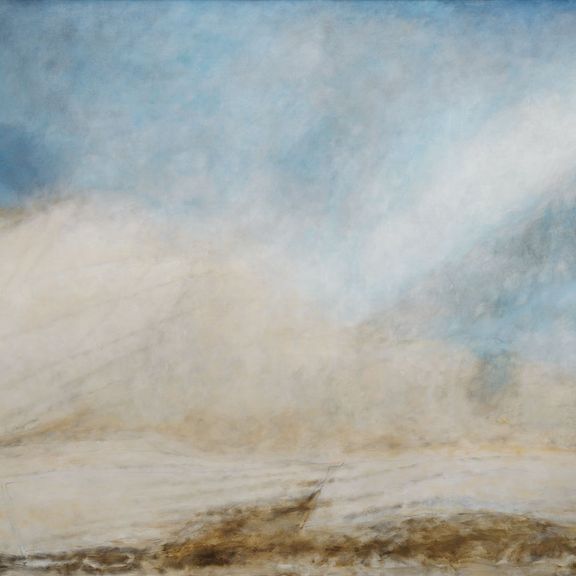
pastel on canvas
1902
lower right
106 × 139 cm
frame, glass
This rare work depicting a view of Prague achieving a high harmony of deep green tones, brick red, and olive shade of the water surface, presents Antonín Slavíček in the best light. This subject-matter is less common for him, but all the more attractive. After 1900, when Slavíček was already a sovereign painter and gained recognition in the art sphere, he began to deal with the city topics concurrently with landscapes. The impulse was probably not only memories of his childhood spent in the back streets of Prague, but also his interest in the city nooks of old Prague vanishing due to the large redevelopment. Smaller, unfinished oil on wood sketch for the presented painting was discovered on the reverse of the painting entitled The Convent of St Agnes, which is signed and dated 1902, and thus gives an exact time frame to the final artwork. This pastel on canvas, whose composition and colour range is clearly based on the preliminary sketch, depicts the Vltava river bank seen from a place called Novotného lávka across the water towards the at that time recently finished Bellevue building. This work is probably the first of three large pastels that Slavíček executed during this period. Particularly interesting is the chosen point of view, which was no longer inspired by the effort to capture the last places of a disappearing old Prague; the artist no longer stood up against the destruction of historical buildings, but shifted his interest to the nascent metropolis yet to find its own new character.The value of this artwork from a high-quality inter-war and post-war Prague collection is confirmed by its listing in the inventories of the artist’s work (J. M. Tomeš: Antonín Slavíček, Prague, 1966, cat. no. 132; J. Kotalík: Antonín Slavíček, Inventory, Prague, 1965, cat. no. 186, p. 138). Based on the above-mentioned contexts and facts, this painting is considered a great opportunity to acquire Slavíček’s work of exceptionally high value. Assessed during consultations by prof. R. Prahl, CSc., and prof. J. Zemina. The expertise by PhDr. K. Srp is attached.







